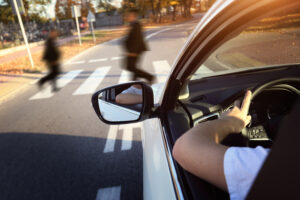In the hustle and bustle of modern life, pedestrians often find themselves sharing the roadways with motor vehicles, bicycles, and various forms of transportation. South Carolina, with its picturesque landscapes and growing urban areas, is no exception. Pedestrian safety is a critical concern, and understanding the legal rights of pedestrians within the state is essential for both residents and visitors alike.
The Right of Way
The first step in comprehending pedestrian rights in South Carolina is to understand the concept of right of way. In general, pedestrians have the right of way when crossing roadways in marked crosswalks or at intersections, as long as they obey traffic signals and pedestrian signals. This means that vehicles must yield to pedestrians in these situations.
However, pedestrians also have responsibilities. They must exercise reasonable care and caution when crossing roadways outside designated crosswalks or intersections. It’s important to remember that right of way does not mean that pedestrians can disregard their own safety. All road users, including pedestrians, must adhere to traffic laws to ensure safe interactions.
Crosswalks and Intersections
Marked crosswalks and intersections are critical points for pedestrian safety. Pedestrians have the strongest legal protections when crossing at these locations, and drivers are obligated to yield to them. South Carolina law requires vehicles to stop and yield to pedestrians within crosswalks and at intersections, particularly when pedestrians are following traffic signals.
Pedestrian Signals
Pedestrian signals, the illuminated signs that provide guidance for pedestrians at intersections, also play a vital role in pedestrian safety. When these signals indicate “Walk,” pedestrians have the right of way to cross the street. Conversely, when the signal shows “Don’t Walk” or flashing “Don’t Walk,” pedestrians should not enter the roadway, as they might not have sufficient time to cross before oncoming traffic reaches the intersection
Sidewalk Usage and Roadway Safety
Sidewalks are designed to provide a safe space for pedestrians away from vehicle traffic. In South Carolina, pedestrians are generally required to use sidewalks when they are available. If a sidewalk is not present, pedestrians must walk on the left side of the roadway facing traffic. This enables pedestrians to see oncoming vehicles and take evasive action if necessary.
Contributory Negligence Rule
South Carolina follows a legal principle known as “contributory negligence.” This rule impacts personal injury cases involving pedestrians. In essence, if a pedestrian’s negligence contributes to the accident in any way, they may be barred from recovering compensation. This underscores the importance of adhering to traffic rules and acting responsibly when crossing roadways.
Pedestrian Safety Tips
Understanding your legal rights as a pedestrian is essential, but prioritizing safety is equally crucial. To stay safe while walking in South Carolina:
- Use Designated Crosswalks and Intersections: Whenever possible, cross at marked crosswalks or intersections. This ensures that you have the right of way and increases your visibility to drivers.
- Obey Traffic Signals: Follow pedestrian signals and traffic lights. Cross the road only when the signal indicates it is safe to do so.
- Make Eye Contact: When crossing in front of vehicles, make eye contact with drivers to ensure they see you before stepping into the roadway.
- Stay Visible: Wear bright or reflective clothing, especially when walking at night. Carry a flashlight to increase your visibility.
- Avoid Distractions: Stay off your phone and avoid distractions that can divert your attention from traffic.
- Walk Defensively: Always assume that drivers may not see you or may not stop in time. Stay cautious and be prepared to react.
Pedestrian Infrastructure and Community Advocacy
While understanding your legal rights as a pedestrian is fundamental, it’s also important to consider the broader context of pedestrian safety. Communities and local authorities play a significant role in creating pedestrian-friendly environments. Well-designed infrastructure can reduce the risk of accidents and make walking a safer and more enjoyable experience.
Safe Crossings and Sidewalks
Communities should prioritize the construction and maintenance of well-marked crosswalks and sidewalks. These pedestrian-friendly features ensure that walkers have designated areas to cross roadways safely and provide them with a clear path away from vehicular traffic. When planning new roads or redeveloping existing areas, integrating these features is a critical consideration for the safety of pedestrians.
Traffic Calming Measures
Traffic calming measures, such as speed bumps, raised crosswalks, and narrower roadways, can help slow down vehicle traffic in residential areas and near schools. By reducing vehicle speeds, these measures enhance pedestrian safety and encourage more people to choose walking as a mode of transportation.
Education and Awareness
Educational campaigns that focus on both drivers and pedestrians can contribute significantly to safer roadways. Drivers need to be aware of the laws surrounding pedestrian rights and exercise caution around pedestrians. Pedestrians, on the other hand, should be educated about their own responsibilities, such as using designated crosswalks, obeying traffic signals, and staying visible.
Creating Walkable Communities
The concept of “walkability” emphasizes creating communities where walking is convenient, safe, and enjoyable. Urban planners and community leaders can work together to design neighborhoods that prioritize pedestrian pathways, integrate green spaces, and promote mixed-use developments. Walkable communities not only enhance safety but also contribute to overall health, reduce traffic congestion, and support local economies.
At Malchow Johnson Injury Lawyers, we are committed to promoting pedestrian safety and protecting the rights of those injured in accidents. If you or a loved one has been involved in a pedestrian accident, understanding your legal rights is crucial. Our experienced team of attorneys is here to help you navigate the legal complexities and seek the compensation you deserve. Contact us today for a free consultation and let us advocate for your rights and well-being. Your safety matters, and we are here to support you every step of the way.
